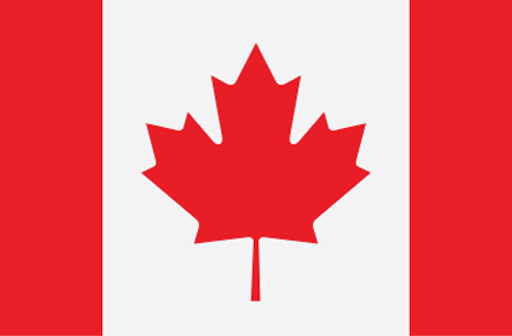How Can You Help Decrease The Spread Of The Coronavirus
How Can You Help Decrease The Spread Of The Coronavirus
Having known all the necessary measures like keeping your distance from family and friends, washing your hands regularly but you are still not clear about some things; like the frequency of handwashing; the effectiveness of social distancing; how to go about social distancing (the do’s and don’ts); how to specifically stock necessities and medicine cabinet to forestall repeated trips outdoors, measures to take to protect me and other from the Coronavirus, etc.
The following steps help avert the transmission of Coronavirus:
* Steer clear of people who are ill.
* Avoid touching your mouth, nose, and eyes.
* Stay home when you are ill.
* Cover your cough or sneeze with a paper towel, then throw it in the bin.
* Clean and decontaminate often touched surfaces and items daily; high traffic surface areas like fixtures in the washroom, counters, phones, tabletops, door handles, keyboards, tablets, etc.
* Wash your hands frequently with soap and water.

Facts about washing my hands correctly
Wash your hands frequently with soap and water for at twenty seconds at least, especially before eating, after going to the washroom; after blowing your nose, sneezing, or coughing; and after handling deliveries. If soap and water are not within reach, make use of an alcohol-based hand sanitizer with at least 60% alcohol, covering the surface area of your hands and rubbing together until dry.
Always wash your hands with soap and water when they are very dirty.
Facts about how Coronavirus transmits
The Coronavirus is believed to transmit mostly from individual to individual. This takes place between individuals who are in close contact with one another. Microbial droplets that are released when an infected person sneezes or coughs may get in the noses or mouths of people who are close by or probably breathed into their lungs.
An individual infected with coronavirus, even the asymptomatic one might release aerosols when they breathe or talk. Aerosols are infectious viral specks that can float around in the air for close to three hours. Another individual can breathe in these aerosols and get infected with the coronavirus. This is the reason every individual should make use of a face mask to cover their mouth and nose when they go outdoors.

Coronavirus can also transmit from touching infected surfaces or items. For instance, an individual can get Coronavirus by touching a surface or an item that has the virus on it and then touching their nose, mouth, or possibly their eyes.
The virus may be released in sputum, feces, and semen; whether it is released in vaginal fluids is not yet known. Kissing can also transmit the virus. Transmission of the virus through feces, or during anal or vaginal intercourse or oral sex, seems to be extensively unlikely for now.
How to contact tracing can assist in reducing the transmission of the Coronavirus
Any individual that comes in close contact with an infected individual is at high risk of becoming infected, and likely infecting others. Contact tracing can assist in averting further transmission of the virus by quick identification and informing individuals that may be infected and contagious, so they can take caution and deliberate action not to infect others. Contact tracing starts with identifying every individual that a person currently diagnosed with the Coronavirus has been in contact with since they became infected. In the case of Coronavirus, an individual might be infected 48 to 72 hours before they begin to exhibit symptoms. The contacts are informed of their vulnerability. They might be told the symptoms to watch out for, counseled to isolate themselves for a period of time and to seek medical attention if they begin to exhibit symptoms.
Importance of social distancing
The Coronavirus predominantly transmits when an individual inhales droplets that are released when a contagious person sneezes or coughs. Furthermore, any contagious individual, with or without symptoms, can transmit the virus by coming in contact with a surface; and the coronavirus could stay on that surface and another person could touch the same surface and then touch their mouth, eyes or nose. That is the reason it is so crucial to make effort not to touch public surfaces or in the least make an effort to wipe them with a disinfectant. Social distancing invariably refers to actions taken to stop or slow down the transmission of a contagious disease. For a person, it means keeping enough distance (6 feet or more) between yourself and another person to avoid getting infected or infecting another person. School shut down, the mandate to work from home, library closures, and cancellation of meetings and larger functions assist in enforcing social distancing at a communal level. Reducing the figure and rate of new coronavirus infections is very grave to slow down the risk that large numbers of critically sick patients cannot receive meticulous care to save their lives. Highly real-life prognosis indicates that unless we commence extensive social distancing immediately and daily too, our medical and other healthcare institutions will not be able to manage the likely inrush of victims.
Medical and health stock for an extended stay at home
Make effort to stock in the least a 30-day supply of any prescriptions that you know you will need. Peradventure your insurance accommodates 90-day refills is even much better. Ensure you also have over-the-counter medicines and other health supplies within your reach.
Possible rate Coronavirus infections that may have been prevented due to policies structured to reduce the spread of the virus
According to a peer-reviewed article published in the journal Nature, urgent health approaches on a large-scale averted more than 500 million Coronavirus infections in six countries from January to April 2020. The research authors scrutinized the effect of policies structured to reduce the transmission of the virus in six countries: China, the United States, Italy, South Korea, France, and Iran. They compared the growth rate of Coronavirus infections in each country before and after the policies were formulated; such as business, school, and restaurant closures; travel restrictions and social distancing measures were introduced. These discoveries fortify the importance of continuous cautionary exercise and practice health-boosting attitudes as limitations are being relaxed.









Leave a comment